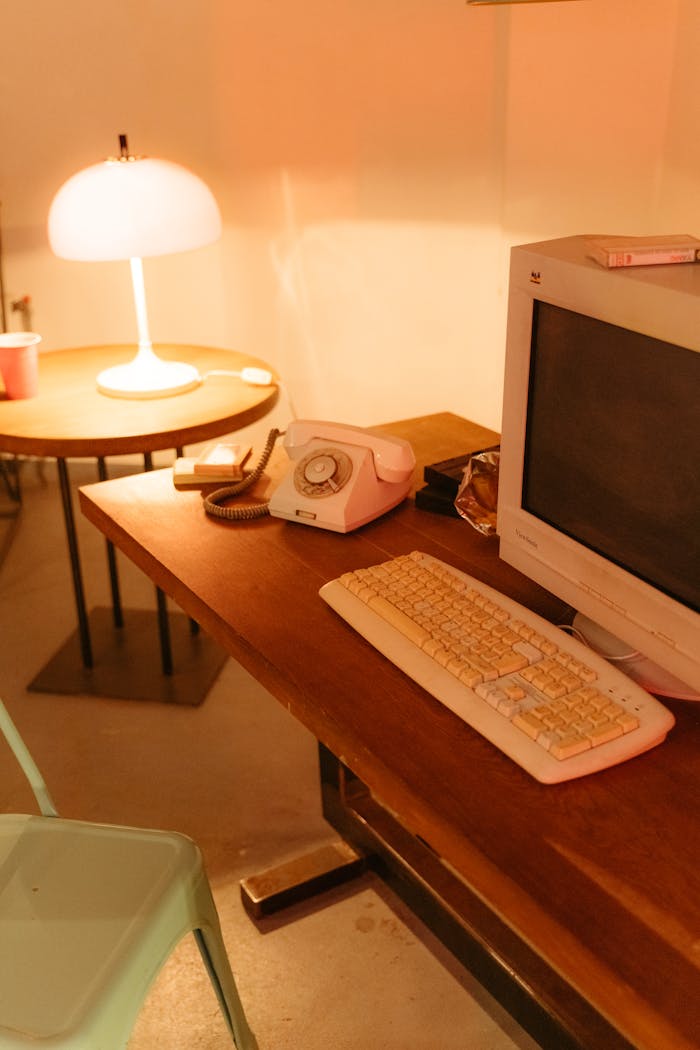In today’s fast-paced digital world, I’ve noticed how AI-powered devices constantly vie for our attention. It’s becoming increasingly difficult to focus on tasks without the distraction of notifications, updates, and alerts. That’s why I’ve turned to an unexpected solution: vintage devices.
These old-school gadgets, with their limited functionality and lack of internet connectivity, offer a refreshing escape from the constant barrage of information. By incorporating vintage devices into my daily routine, I’ve discovered a way to enhance focus and productivity. In this article, I’ll explore how these retro tools can help us reclaim our attention in an age of AI distractions.
The Rise of AI Distractions in Modern Life
AI-powered technologies have become increasingly prevalent in our daily lives, creating a constant stream of interruptions and distractions. These advancements, while beneficial in many ways, have also introduced new challenges to our ability to focus and concentrate.
The Constant Pull of Smart Devices
Smart devices constantly vie for our attention through notifications, alerts, and personalized recommendations. I’ve observed that the average smartphone user receives 46 push notifications daily, with each alert triggering a dopamine release that reinforces the urge to check devices frequently. This perpetual connectivity creates a cycle of distraction, making it difficult to engage in deep, focused work or maintain meaningful real-world interactions (https://www.theguardian.com/lifeandstyle/2021/dec/16/distraction-disaster-notifications-hell-ping-phone-interruptions-escape).
Information Overload and Cognitive Fatigue
The sheer volume of information available at our fingertips can lead to cognitive overload and mental exhaustion. Studies show that the human brain processes an average of 34 gigabytes of information daily, equivalent to about 100,000 words. This constant influx of data from AI-driven content recommendations, news feeds, and social media updates can overwhelm our cognitive capacity, resulting in decreased productivity and increased stress levels.
Rediscovering Vintage Devices for Focus
I’ve found that vintage devices offer a refreshing escape from the constant connectivity of modern technology. These retro tools provide a unique approach to enhancing focus and productivity in our AI-driven world.
The Appeal of Single-Purpose Tools
Single-purpose vintage devices excel at one specific task, eliminating the distractions inherent in multi-functional gadgets. A typewriter, for example, serves solely for writing, without the temptation of internet browsing or social media notifications. This laser-focused functionality allows for deeper concentration and improved workflow. Analog watches, dedicated calculators, and physical calendars similarly offer distraction-free alternatives to their smartphone counterparts, enabling users to engage with tasks more intentionally.
Minimalism and Intentional Technology Use
Vintage devices embody the principles of minimalism and intentional technology use. By incorporating these tools into daily routines, users consciously choose to limit their exposure to digital distractions. This approach fosters a more mindful relationship with technology, encouraging users to prioritize essential tasks and reduce unnecessary screen time. Embracing vintage devices often leads to a decluttered digital life, as users become more selective about the technologies they adopt and use regularly.
Vintage Devices That Boost Concentration
Vintage devices offer a unique blend of functionality and simplicity, making them powerful tools for enhancing focus in our AI-driven world. Here are three classic devices that can significantly boost concentration and productivity:
Typewriters: Distraction-Free Writing
Typewriters provide a focused writing experience without the temptations of internet browsing or social media notifications. The mechanical process of typing on a typewriter encourages deliberate thought and reduces editing impulses, allowing writers to maintain flow and concentration. The tactile feedback and rhythmic sound of keys striking paper create a immersive writing environment, free from digital distractions. Many writers, including famous authors like Danielle Steel and Tom Hanks, still use typewriters for their first drafts to maintain focus and creativity.
Analog Watches: Time Management Without Notifications
Analog watches offer a simple, elegant solution for time management without the constant barrage of notifications. Unlike smartwatches or phones, analog timepieces display only the current time, eliminating the urge to check messages or scroll through apps. This singular focus on time helps wearers stay aware of their schedule without falling into the trap of digital distractions. Studies show that people who use analog watches tend to be more punctual and have better time management skills, as they’re more conscious of the passing of time without relying on digital reminders.
Physical Notebooks: Tactile Brainstorming and Planning
Physical notebooks provide a tangible space for brainstorming and planning, free from the distractions of digital devices. The act of writing by hand engages different cognitive processes than typing, leading to improved memory retention and creative thinking. Research published in the journal Psychological Science indicates that students who take notes by hand perform better on conceptual questions than those who use laptops. The limitation of space in physical notebooks also encourages concise thinking and prioritization, helping users focus on the most important ideas and tasks.
The Psychology Behind Vintage Device Effectiveness
The effectiveness of vintage devices in enhancing focus stems from fundamental psychological principles. These retro tools tap into our cognitive processes and behavioral tendencies in ways that modern, AI-driven devices often fail to do.
Reduced Cognitive Load
Vintage devices significantly reduce cognitive load by limiting functionality and eliminating distractions. Unlike smartphones that bombard users with multiple stimuli, typewriters and analog watches perform single, specific tasks. This simplicity allows the brain to allocate more resources to the task at hand, improving concentration and productivity. Studies show that multitasking, a common behavior with modern devices, can reduce productivity by up to 40%. In contrast, vintage devices promote single-tasking, enabling deeper focus and more efficient information processing.
Increased Mindfulness and Presence
Using vintage devices fosters a sense of mindfulness and presence. The tactile nature of physical notebooks and the rhythmic sounds of typewriters create a more immersive experience, engaging multiple senses. This sensory involvement promotes a state of flow, where users become fully absorbed in their tasks. Research indicates that individuals in a flow state experience higher levels of creativity and satisfaction. Additionally, the absence of notifications and alerts from vintage devices eliminates constant interruptions, allowing users to maintain sustained attention and achieve a deeper connection with their work or surroundings.
Integrating Vintage Devices into Modern Workflows
I’ve found that incorporating vintage devices into modern workflows enhances focus and productivity. By strategically blending old and new technologies, I create a balanced work environment that maximizes efficiency while minimizing distractions.
Creating Tech-Free Zones
Tech-free zones are essential for maintaining focus in a world of AI distractions. I designate specific areas in my workspace where modern devices are not allowed. In these zones, I use vintage devices like typewriters or physical notebooks exclusively. This approach creates a distraction-free environment, allowing for deep work and concentrated thinking. By eliminating the constant buzz of notifications and the temptation to check emails or social media, I’ve noticed a significant improvement in my ability to concentrate on complex tasks.
Balancing Old and New Technologies
Striking a balance between vintage devices and modern technology optimizes workflow efficiency. I use vintage devices for specific tasks that require deep focus, such as brainstorming or initial drafting. For example, I might start a writing project on a typewriter to capture raw ideas without digital distractions. Once I’ve completed the initial draft, I transition to a computer for editing and formatting. This hybrid approach combines the concentration-enhancing benefits of vintage devices with the efficiency of modern technology for tasks like research and collaboration. By carefully selecting when and how to use each type of technology, I maintain focus while leveraging the strengths of both old and new tools.
The Future of Focus: Lessons from the Past
As we navigate an increasingly AI-driven world, the principles of vintage devices offer valuable insights for maintaining focus. I’ve observed how these lessons from the past are shaping our approach to technology and productivity in the future.
Designing Modern Devices with Vintage Principles
Modern device manufacturers are incorporating vintage principles to create more focused and less distracting products. Companies like Light Phone and Punkt are producing minimalist smartphones that prioritize essential functions while eliminating unnecessary features. These devices often include:
- E-ink displays for reduced eye strain
- Limited app ecosystems to minimize distractions
- Simplified interfaces for intuitive use
- Longer battery life, reminiscent of older cell phones
By adopting these vintage-inspired design elements, manufacturers are addressing the growing demand for devices that enhance concentration and reduce digital overwhelm.
The Growing Movement Towards Digital Minimalism
Digital minimalism, a philosophy that emphasizes intentional technology use, is gaining traction as a response to AI-driven distractions. This movement encourages:
- Curating digital tools based on personal values and goals
- Implementing regular digital detoxes
- Adopting a “slow tech” approach to device usage
- Prioritizing face-to-face interactions over digital communication
As more individuals embrace digital minimalism, we’re seeing a shift in how technology is integrated into daily life. This approach fosters a healthier relationship with digital tools, allowing for improved focus and reduced dependency on constant connectivity.
Conclusion
Vintage devices offer a powerful antidote to the constant distractions of our AI-driven world. By embracing these retro tools we can reclaim our focus and boost productivity. The simplicity and single-purpose nature of typewriters analog watches and physical notebooks provide a refreshing break from the overwhelming connectivity of modern technology. As we move forward it’s clear that a balance between old and new is key. By integrating vintage principles into our digital lives we can create a more mindful and focused approach to technology use. Ultimately this blend of past and present may hold the key to maintaining our sanity and productivity in an increasingly AI-dominated future.



